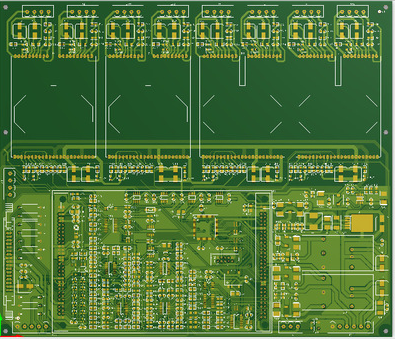1. Bubbles.
In the process of smt processing and welding, the leads of the components to be welded are pierced into the holes of the printed circuit board. After welding, there is a fire-breathing solder arch at the root of the lead, and there is a small hole in the center, and the bottom of the hole may be It hides a lot of emptiness, and this welding defect is called bubbles. The reason for the emptiness is that the copper foil surface of the printed circuit board has a large heat capacity. Although the soldering has been completed, its back surface has not yet been cooled. Due to the thermal inertia, the temperature is still rising. At this moment, the outside of the solder joint begins to condense, and the gas generated inside the solder joint is discharged, which constitutes a void. In addition, stains on the pads, poor oxidation of component leads, too large vias on the pads, too thin component leads, too little solder, and too much rosin can also cause this phenomenon.
2. Lack of solder.
When soldering with an electric soldering iron, if the solder is too small, it will cause poor wetting, and the solder cannot form a smooth surface into a flat pad shape. This welding defect is called lack of solder. One of the reasons for this shortcoming is that the welding wire is evacuated too early; the other is that the useful area of the soldering iron and the solder is small, the temperature is too high or the welding time is too long. The lack of solder, which is a welding disadvantage, will cause poor conduction of the circuit due to environmental degradation. The damage of this welding defect is the lack of mechanical strength between the solder joints, which can be welded from the beginning by adding solder wire.

3. Overheating.
The shortcomings of this kind of welding are white solder joints, no metallic luster, and rough appearance. The main cause of overheating is that the power of the soldering iron is too large, the temperature of the soldering iron tip is too high, and the heating time is too long. The damage caused by overheating is that the pads simply fall off, which simply constitutes a decrease in the mechanical strength between the solder joints.
4. Cold welding.
In the process of smt processing and welding, the solder is not completely condensed, and the wires or leads of the components being welded move. At this moment, the solder joints are dull and dull, the structure is loose, and there are micro cracks. This welding defect is called cold welding. The reason for the cold welding is that the PCB is removed too early by the wire or lead of the soldered component, the soldered component trembles, and the power of the electric soldering iron is not good. The damage of cold welding is that the joint strength between the solder joints is low and the conductivity is not good. The method to prevent cold welding is to prevent vibration of the wires or leads of the components being welded during the welding process. If in doubt, injection can be added to re-soldering if necessary.
5. The copper foil lifts up, peels off, and the pad falls off.
The copper foil is lifted and peeled from the printed circuit board, severely or completely broken. This phenomenon is called copper foil lift and peeling. The reason why the copper foil is lifted and peeled off is due to the failure to grasp the operation method during the technical welding, overheating during welding or gathering a certain part of the heating circuit; perhaps a soldering iron tip is used to pry the solder. The damage caused by the lifting and peeling of the copper foil is the short circuit phenomenon of the circuit. The way to deal with copper foil lifting, peeling, and falling pads is to strengthen drills, repeat drills, and master the soldering method proficiently.
6. After the welding is completed, when inspecting the appearance of the solder joint (visual inspection or with a low-power magnifying glass), it can be seen that there is a hole in the solder joint. This welding defect is called a pinhole.
The main cause of pinholes is the large gap between the PCB pad hole and the lead. The damage of pinholes is that the joint strength of the solder joints is low, and the solder joints are easily corroded. The method to deal with pinholes is formed on the printed circuit board, and the opening of the pad hole should not be too large.
7. Rosin welding.
A layer of flux film and dissolved oxides or contaminants are formed between the pin material and the leads of the components to be welded to form a solder joint in the shape of tofu slag. This phenomenon is called rosin welding. The cause of rosin welding is the tip of the soldering iron. Removed too early, so that the flux failed to float to the surface. The damage of rosin welding is the lack of joint strength between the solder joints, and the poor circuit conduction will show the phenomenon of intermittent and intermittent. The method to prevent rosin soldering is not to add too much flux, and PCB soldering should be appropriate at all times.